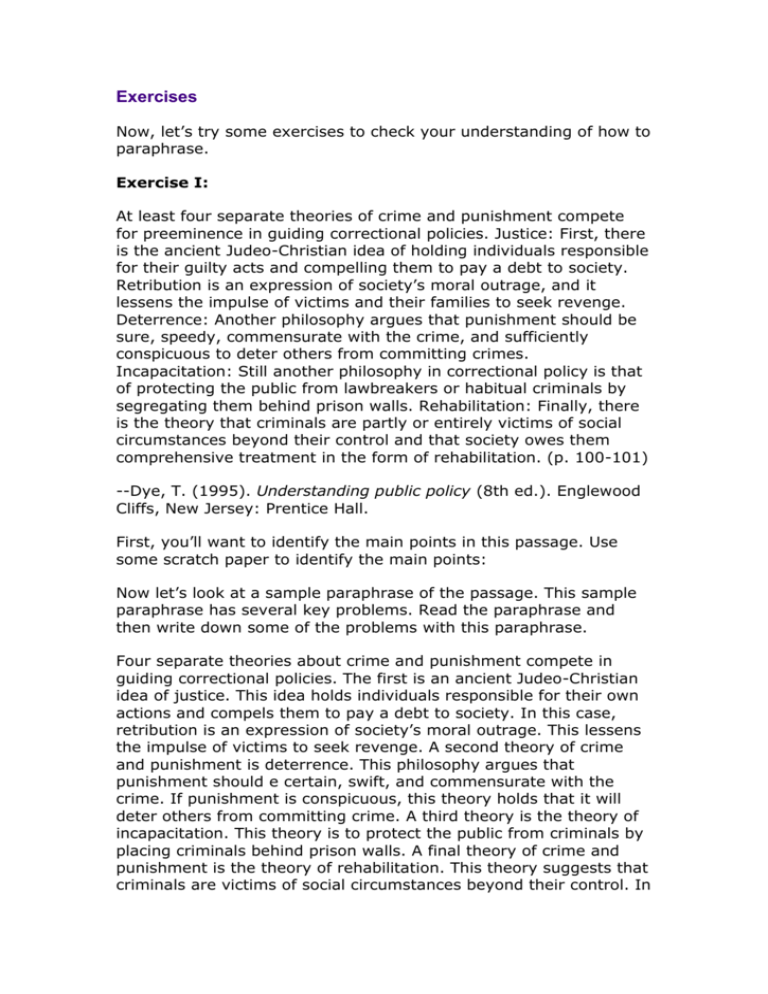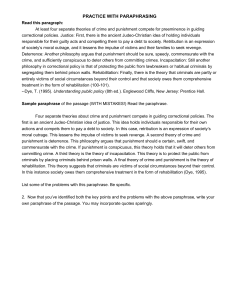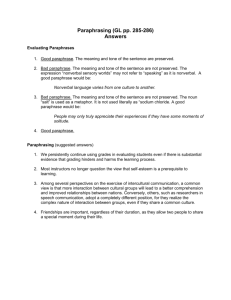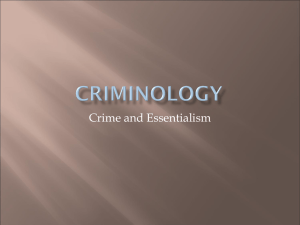paraphrase 3
advertisement

Exercises Now, let’s try some exercises to check your understanding of how to paraphrase. Exercise I: At least four separate theories of crime and punishment compete for preeminence in guiding correctional policies. Justice: First, there is the ancient Judeo-Christian idea of holding individuals responsible for their guilty acts and compelling them to pay a debt to society. Retribution is an expression of society’s moral outrage, and it lessens the impulse of victims and their families to seek revenge. Deterrence: Another philosophy argues that punishment should be sure, speedy, commensurate with the crime, and sufficiently conspicuous to deter others from committing crimes. Incapacitation: Still another philosophy in correctional policy is that of protecting the public from lawbreakers or habitual criminals by segregating them behind prison walls. Rehabilitation: Finally, there is the theory that criminals are partly or entirely victims of social circumstances beyond their control and that society owes them comprehensive treatment in the form of rehabilitation. (p. 100-101) --Dye, T. (1995). Understanding public policy (8th ed.). Englewood Cliffs, New Jersey: Prentice Hall. First, you’ll want to identify the main points in this passage. Use some scratch paper to identify the main points: Now let’s look at a sample paraphrase of the passage. This sample paraphrase has several key problems. Read the paraphrase and then write down some of the problems with this paraphrase. Four separate theories about crime and punishment compete in guiding correctional policies. The first is an ancient Judeo-Christian idea of justice. This idea holds individuals responsible for their own actions and compels them to pay a debt to society. In this case, retribution is an expression of society’s moral outrage. This lessens the impulse of victims to seek revenge. A second theory of crime and punishment is deterrence. This philosophy argues that punishment should e certain, swift, and commensurate with the crime. If punishment is conspicuous, this theory holds that it will deter others from committing crime. A third theory is the theory of incapacitation. This theory is to protect the public from criminals by placing criminals behind prison walls. A final theory of crime and punishment is the theory of rehabilitation. This theory suggests that criminals are victims of social circumstances beyond their control. In this instance society owes them comprehensive treatment in the form of rehabilitation (Dye, 1995). Problems with this Paraphrase: The writer of the paraphrase did not change the structure of ideas, sentence structure, or wording. Essentially, this writer is guilty of plagiarism. Now that you’ve identified both the key points and the problems with the above paraphrase, write your own paraphrase of the passage.








